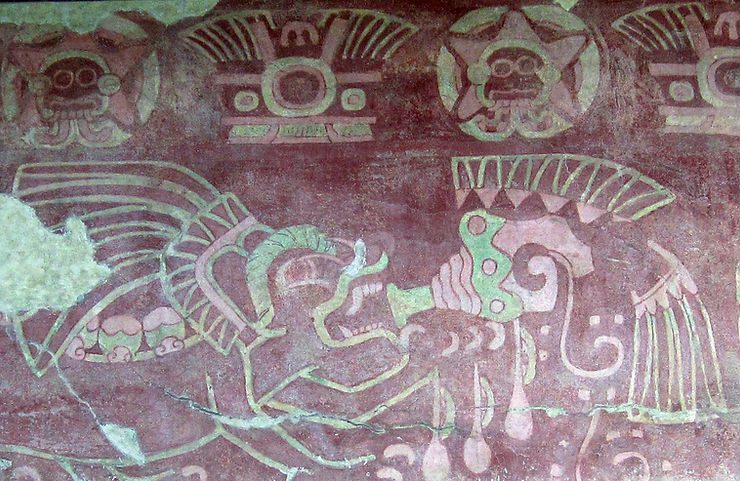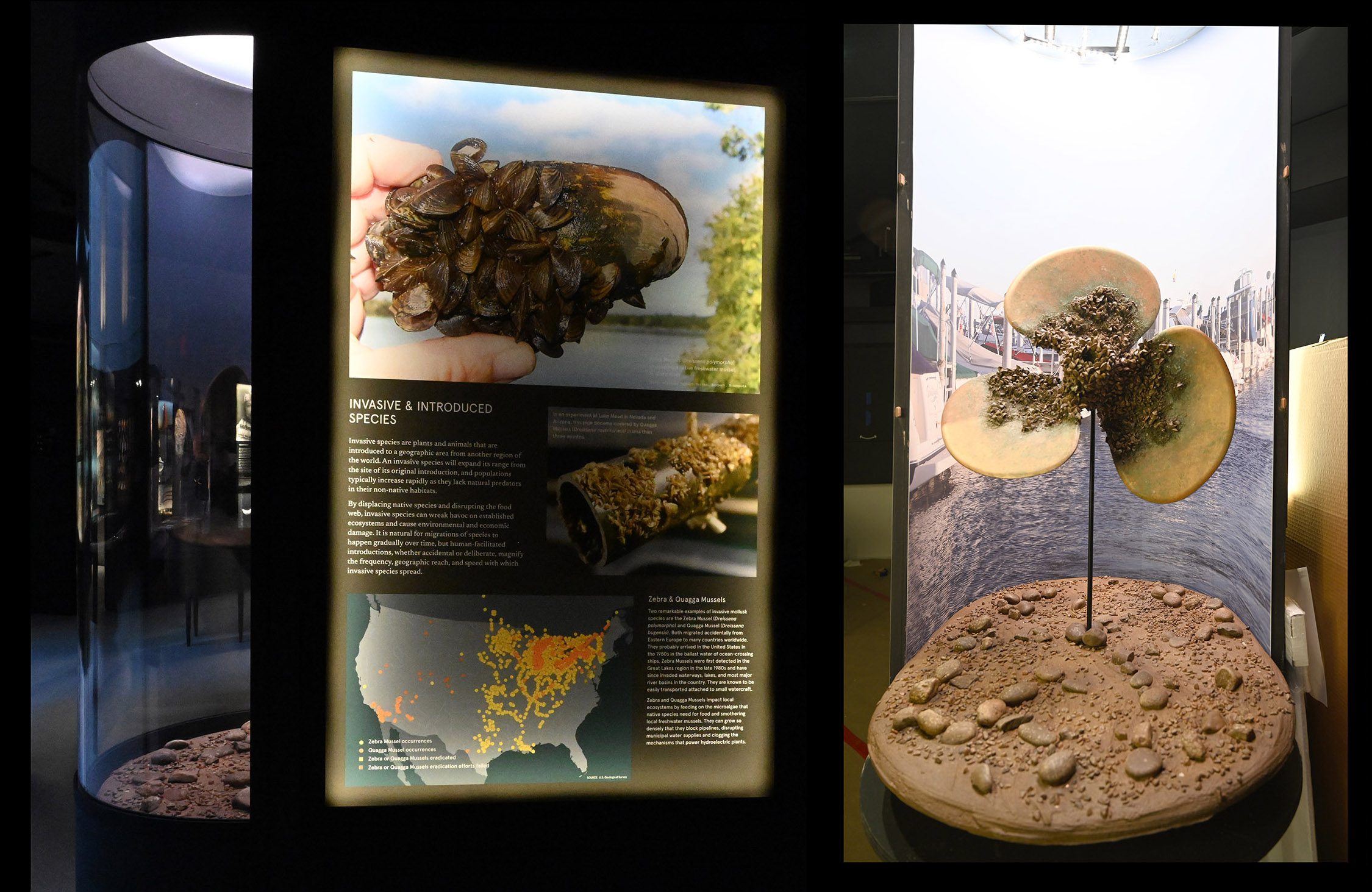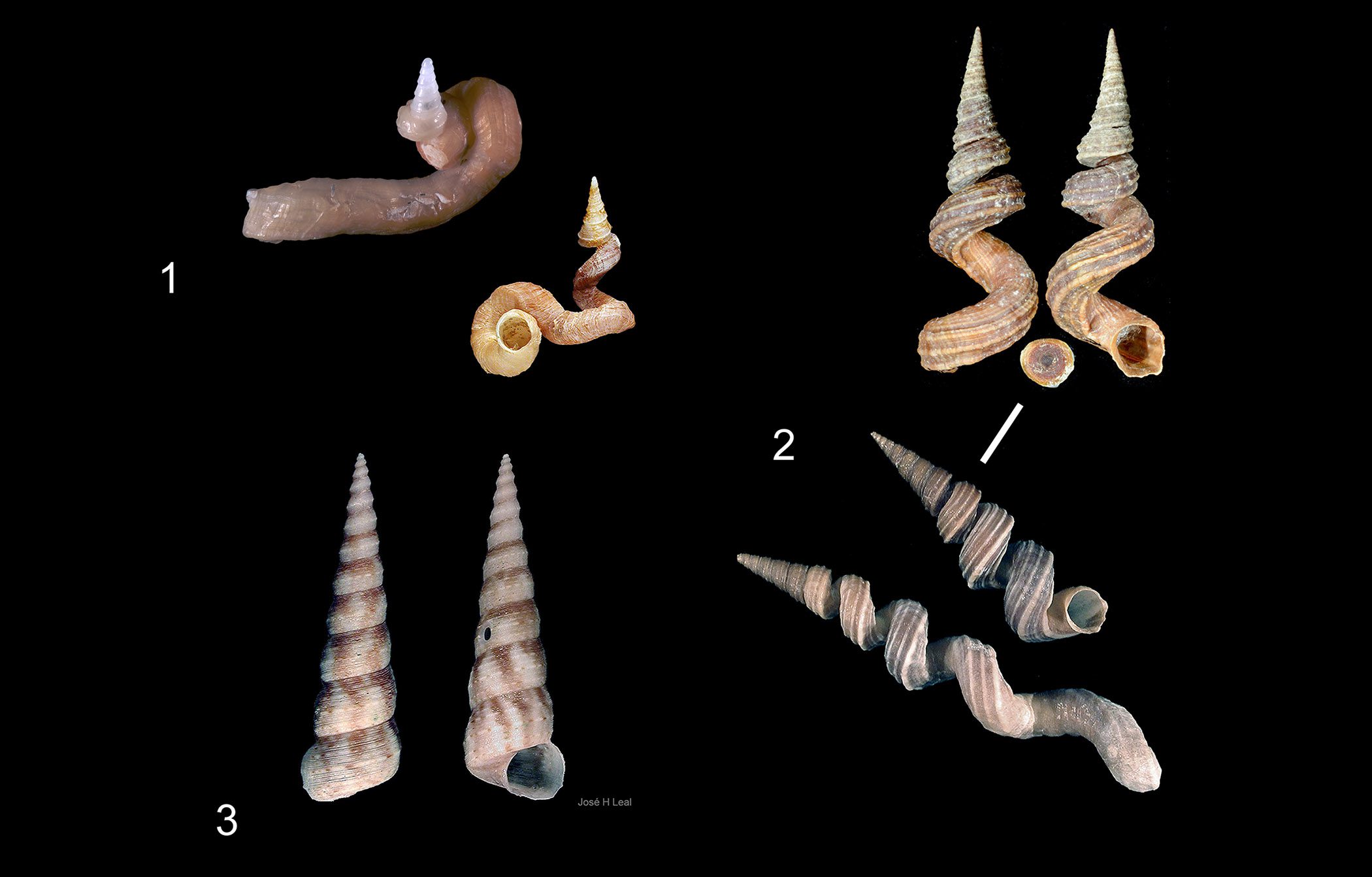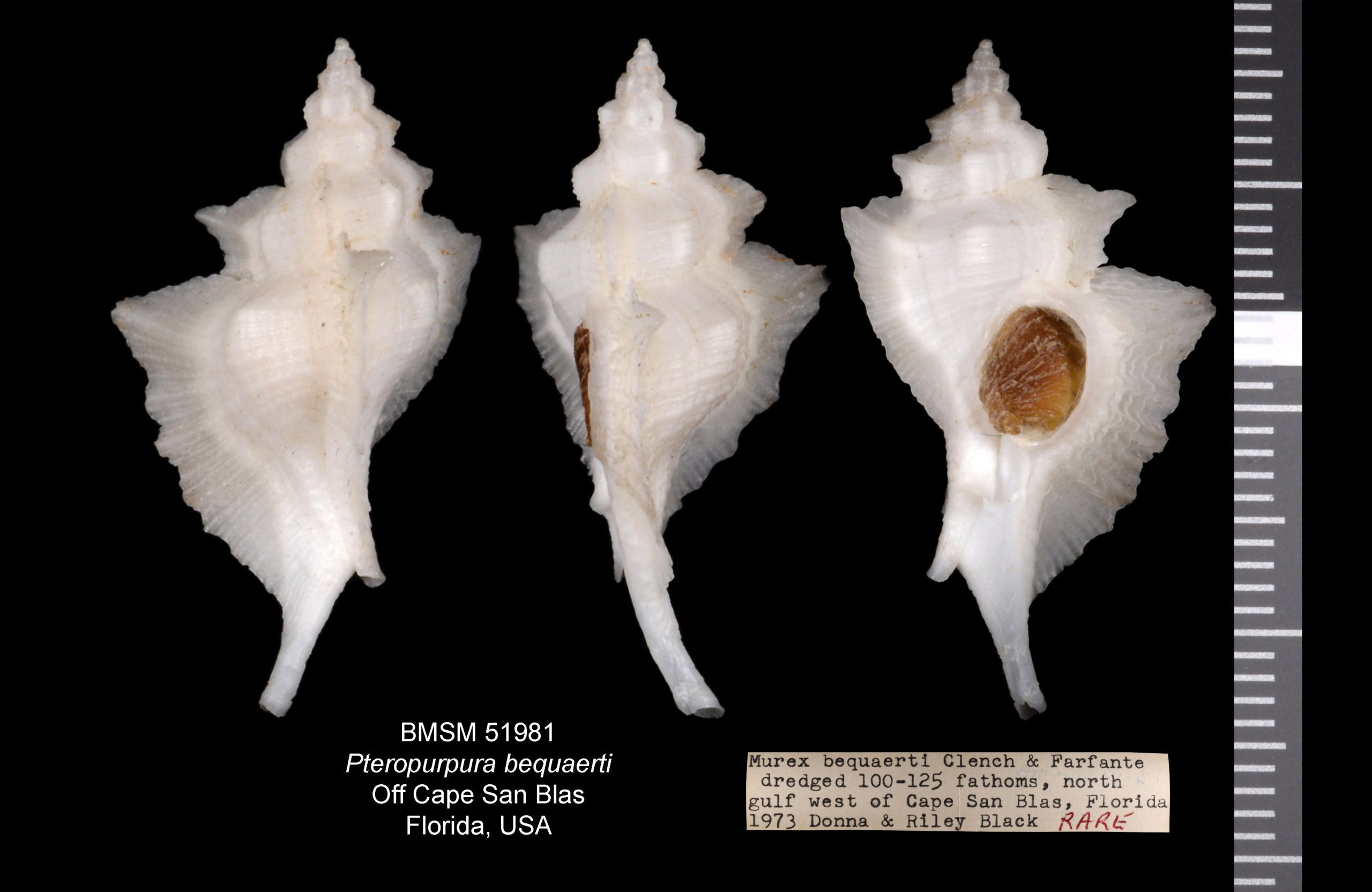As a lover of mollusks and shells, I am always looking for connections of our creatures in the arts, cultures, and history. During a visit to the Teotihuacan Historical Complex near Mexico City a few years ago, I had the opportunity to visit the remnants of the Palace of the Jaguars. The Palace houses a prominent mural portraying a Jaguar that apparently is blowing a feathered conch shell, from which blood is dripping. A narrow, curved object dangling from the shell opening suggests the object is a source of sound, or even music. Teotihuacan was an ancient city that covered about eight square miles. It is considered the largest city in pre-Columbian Americas, having thrived between 100 BCE and 1150 BCE, when it collapsed under domination by the Toltecs. Many of the preserved shell artifacts from Teotihuacan on display at the Complex are Horse Conch shells, Triplofusus giganteus (Kiener, 1840). However, the proportions and emblematic, round “knobs” on the shell illustrated on the mural seem to represent the Queen Conch, Lobatus gigas (Linnaeus, 1758). Both species are relatively common respectively on the Gulf and Caribbean coasts of Mexico. Read more about Teotihuacan and the Palace of Jaguars here.
 Detail of the well-preserved mural at the Palace of the Jaguars at Teotihuacan. Photo by José H. Leal.
Detail of the well-preserved mural at the Palace of the Jaguars at Teotihuacan. Photo by José H. Leal.


